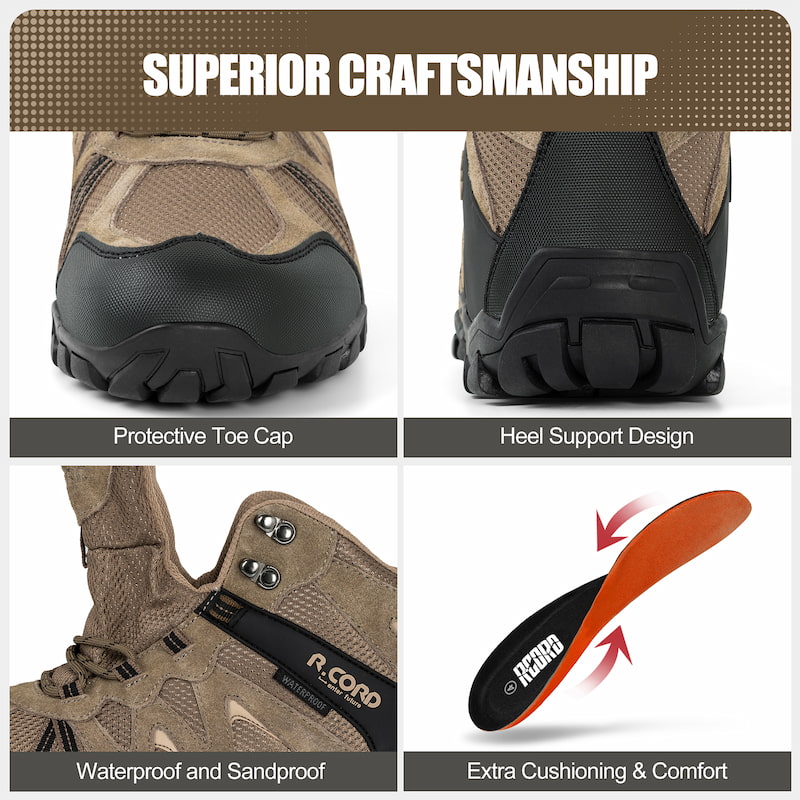hiking boots have important advantages in terms of stability. Here are some key points about the stability of hiking boots:
1. High tube design:hikingboots usually have a high tube design, covering the area above the ankle joint. This design can provide more support and protection in different terrains and complex mountain environments. The high barrel design makes the ankle more stable, reducing the risk of sprains and trips.
2. Hard upper and midsole support: The upper and midsole of hiking boots are usually made of sturdy materials, such as reinforced leather or synthetic fiber materials. These materials provide additional support and stability, helping to reduce flipping and twisting of the feet. A sturdy upper and midsole can also reduce the instability of the feet on rough terrain and rock surfaces.
3. Foot support:hiking boots usually have good support in the sole and arch area. This support can prevent excessive bending of the foot on rough or uneven terrain, providing additional stability.

4. Good anti slip performance: The soles of hiking boots are usually made of specially designed rubber materials with strong grip and have deep and sturdy patterns. This design provides excellent slip resistance, helping to provide firm foot support on slippery, muddy, or rocky surfaces.
5. Forefoot and heel support: The design of hiking boots usually takes into account the need to frequently face steep slopes and downhill situations during hiking. They are usually equipped with additional forefoot and heel support to provide better stability and balance on steep mountain terrain.
These characteristics enable hiking boots to provide better foot stability during the hiking process. However, it is still important to choose hiking boots that are suitable for your foot shape and size to ensure optimal stability and comfort. It is best to try on multiple brands and models before purchasing, and choose the style that suits you.












